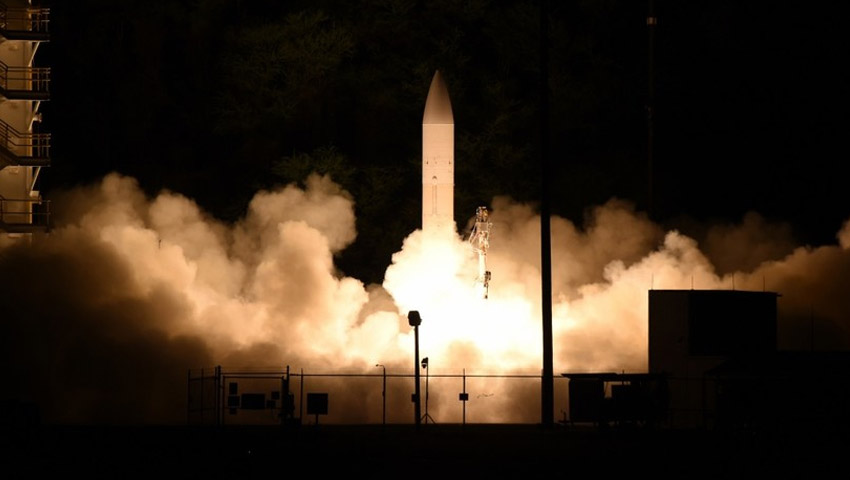The Pentagon has launched a flight test of a hypersonic glide body from a Pacific Missile Range facility in Kauai, Hawaii, on 19 March.
To continue reading the rest of this article, please log in.
Create free account to get unlimited news articles and more!
The test, deemed a success, launched the Common-Hypersonic Glide Body, or C-HGB, which flew at hypersonic speed to a designated impact point according to a statement released by the US Department of Defense. The test was a joint effort by the US Navy and Army.
Concurrently, the Missile Defense Agency monitored and gathered tracking data from the flight experiment that will inform its ongoing development of systems designed to defend against adversary hypersonic weapons.
Information gathered from this and future experiments will further inform DOD's hypersonic technology development, and this event is a major milestone towards the department's goal of fielding hypersonic warfighting capabilities in the early- to mid-2020s.
''This test builds on the success we had with Flight Experiment 1 in October 2017, in which our C-HGB achieved sustained hypersonic glide at our target distances,'' said Vice Admiral Johnny Wolfe, Director, Navy's Strategic Systems Programs, which is the lead designer for the C-HGB.
''In this test we put additional stresses on the system and it was able to handle them all, due to the phenomenal expertise of our top notch team of individuals from across government, industry and academia. Today we validated our design and are now ready to move to the next phase towards fielding a hypersonic strike capability.''
The DoD has been jointly developing the C-HGB that will serve as the base of its offensive hypersonic missile. The test marks a major step forward in accomplishing that mission amid mounting criticism that the United States is behind China and Russia in hypersonic weapons development.
''This test was a critical step in rapidly delivering operational hypersonic capabilities to our warfighters in support of the National Defense Strategy,'' said US Army Lieutenant General Neil Thurgood, Director of Hypersonics, Directed Energy, Space and Rapid Acquisition, whose office is leading the Army's Long Range Hypersonic Weapon program and joint C-HGB production.
"We successfully executed a mission consistent with how we can apply this capability in the future. The joint team did a tremendous job in executing this test, and we will continue to move aggressively to get prototypes to the field."
Hypersonic weapons, capable of flying at speeds greater than five times the speed of sound (Mach 5), are highly manoeuvrable and operate at varying altitudes. This provides the warfighter with an ability to strike targets hundreds and even thousands of miles away, in a matter of minutes, to defeat a wide range of high-value targets. Delivering hypersonic weapons is one of the department's highest technical research and engineering priorities.
The Army wants a mobile land-based capability fielded around 2023. That means the service will likely choose manufacturers to build hypersonic missiles in a year or two. The Navy wants its ship-launched capability fielded in 2023 followed by a submarine-launched missile in 2024, and the Air Force wants to field its air-launched version in 2022.

 Login
Login







